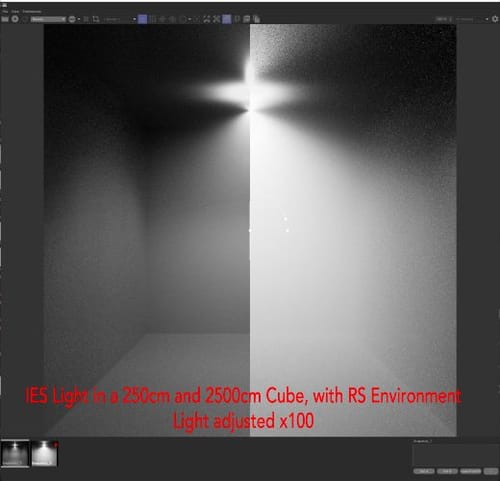Size of the IES Light redshift
-
Hi, I'm trying to create a IES light in a Redshift scene. I have not needed IES until now, so I have no experience with it and I am surprised that I cannot change the size of the light cast on the wall. I would need it because sceńe is big and complex. It isn't effective to scale down the scene to fit the size of the IES light. Scale Tool for IES light doesn't work. Is there any way to increase scale the IES light? Thank you for your response
-
Hi hang-single,
To my understanding, that is not how IES Profiles work.
(If you must, I would do this: However, set the light source you have in the standard scale. If you scale the whole scene by 10 then the Intensity might match the needed intensity if set a 100 times higher. How that shows up as hot specular might be scene dependent! Please test this while rendering and then A/B both results, they differ a little bit, but given that we have no 100% perfect duplication of natural materials either, that might be OK. Except you intorduce any natural influences, e.g., RS Environment, that will get tricky very quickly. This is just a workaround, not suggested.)


Light fixtures are measured in real-world units, and the light is measured accordingly.
For any no-parallel light, here spreading wider in the distance, the intensity of light works as the inverse power of two; as the illuminated area grows in two dimensions, the distance does not.From my point of view, it is not always to just take the object's (the fixtures) axis, as diffuse lights would have their "point-light" equivalent way behind them. This is often a more extended discussion, especially on "Set" when more extensive diffuse sources are used. In other words, there are a lot of opinions, and the web is undoubtedly the wealthiest resource for that wide variety of quality.
The whole idea of IES Profiles is centered around eliminating the guesswork. Putting it into a different scale (dimension) would require adjusting the intensity of the whole source, but as some light fixtures work with diffusion (filter or bounce) in the mix with direct light, it is not clear to me how to adjust this, if perfect results are needd. After all, light needs the same precision in the surface material setup, as mentioned. This is another question of how close those systems can be to following real-world scenarios.
All the best